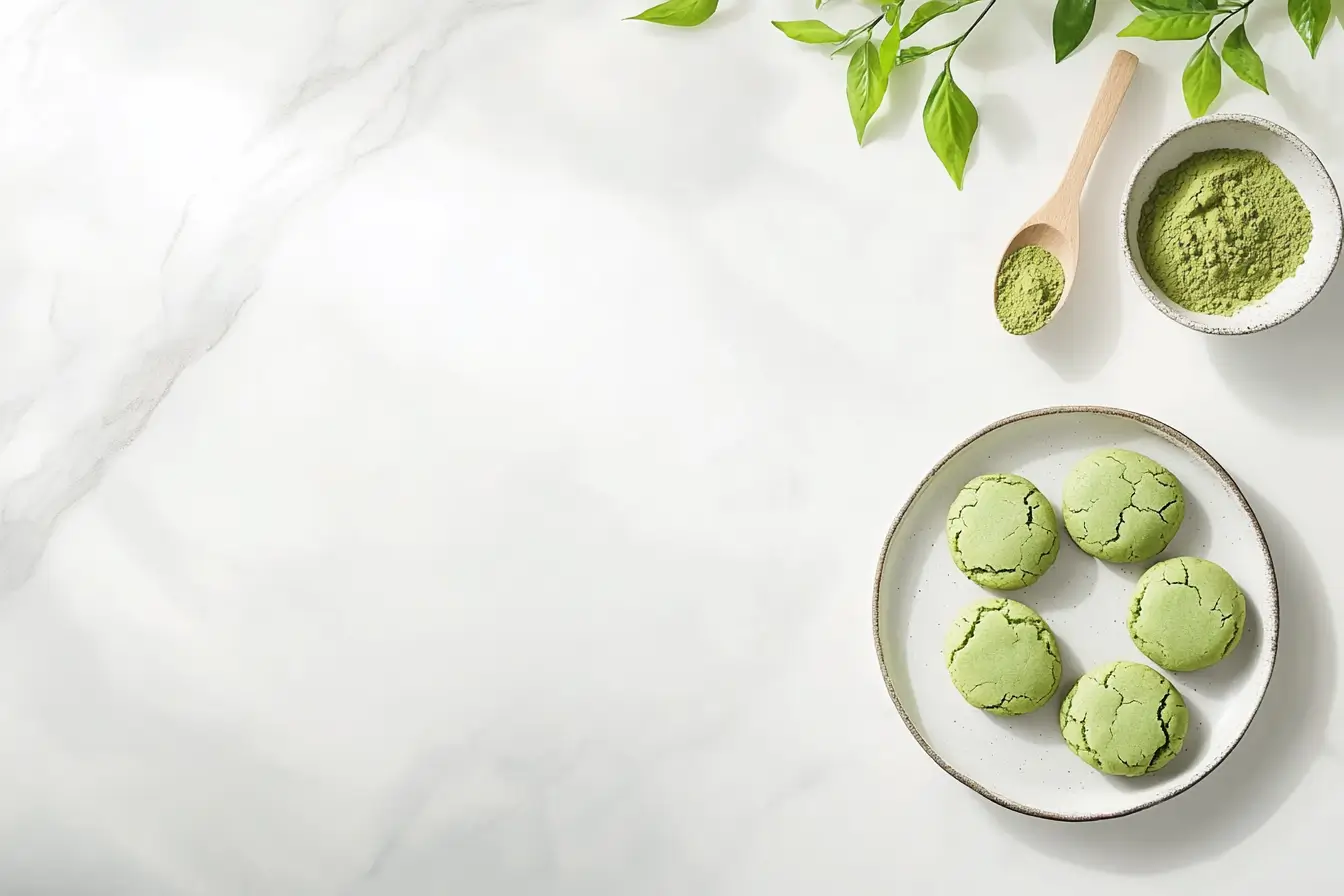Ever pulled a tray of matcha cookies out of the oven, expecting that gorgeous green — only to find them dull or brown instead? 😩
Don’t worry — you’re not alone! This is one of the most common baking disappointments for matcha lovers.
In this guide, we’ll uncover the science behind matcha browning, the ingredients that cause it, and simple tricks to keep your cookies vibrant and beautiful every time.
🍵 Why Do Matcha Cookies Turn Brown?
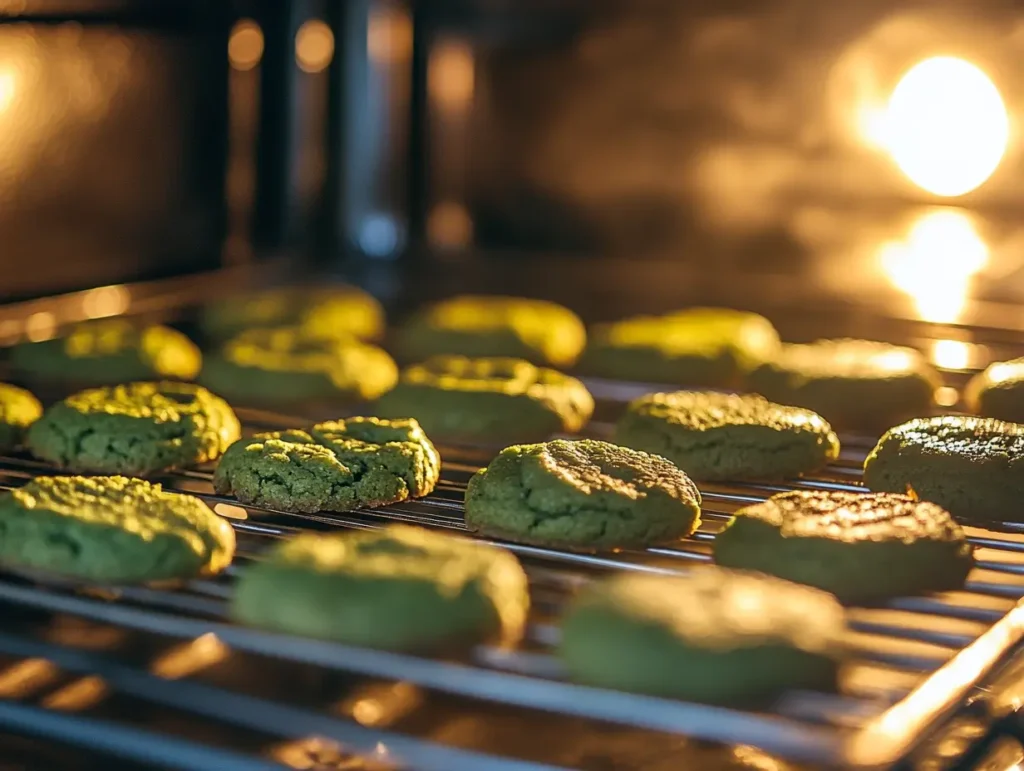
Oxidation of Matcha Powder
Matcha gets its signature green color from chlorophyll, a natural pigment that’s sensitive to air, heat, and light.
When you bake, oxidation breaks down chlorophyll — especially if your oven is too hot or the matcha is low-quality — resulting in dull, brownish cookies.
How to Fix It:
- Store matcha in an airtight, opaque container away from light.
- Refrigerate or freeze it if you live in a warm climate.
- Use fresh, culinary-grade matcha for baking (never old or open for months).
📝 Pro Tip: A high-quality matcha stays bright even when baked — dull green matcha before baking means dull cookies later.
Effect of Baking Temperature
High heat kills matcha’s color quickly. Anything above 350°F (175°C) can brown your cookies before they’re even done inside.
Best Temperature for Matcha Cookies:
Bake between 325°F and 340°F (160–170°C) for 10–12 minutes.
Want another way to bake matcha beautifully? Try our <a href=”https://yumarecipes.com/matcha-brownies-recipe/”>Matcha Brownies Recipe</a> — fudgy, fragrant, and still vibrantly green. 🍫💚
To explore another example of matcha used in baked goods, check out our guide on Fudgy Brown Butter Matcha Brownies. This recipe showcases how to use browned butter while maintaining the beautiful green hue of matcha.
Browning Reaction (Maillard Reaction)
The Maillard reaction is what makes your chocolate chip cookies golden brown and delicious — but it’s not what you want in matcha baking.
When sugar and butter react under heat, they create brown pigments, dulling your matcha color.
Tips to Control It:
The Maillard reaction is what makes your chocolate chip cookies golden brown and delicious — but it’s not what you want in matcha baking.
When sugar and butter react under heat, they create brown pigments, dulling your matcha color.
Tips to Control It:
Avoid overbaking, which intensifies the Maillard effect.
Use more white sugar and less brown sugar (which contains molasses).
Try coconut oil instead of butter for lighter-colored cookies.
Key Ingredients That Impact Matcha Cookies’ Color
How Sugar Affects Matcha Cookies Turning Brown
Brown sugar = darker cookies.
White sugar or powdered sugar = lighter, greener cookies.
👉 For best results, use:
¼ cup brown sugar
This balance keeps sweetness while preserving that beautiful matcha shade.
¾ cup white sugar
The Role of Butter in Matcha Cookie Browning
Butter enhances flavor but promotes browning. If your goal is greener cookies:
- Use unsalted butter (lighter in color)
- Or substitute part of it with coconut oil or vegan margarine
Just remember, small substitutions can slightly change texture and flavor.
Can White Chocolate Chips Help Prevent Matcha Cookies From Browning?
Adding white chocolate chips not only enhances the taste but also visually brightens your cookies. The contrast of white and green makes any slight browning less noticeable.
Fold them in gently — overmixing introduces air, accelerating oxidation and dulling the color.
Flour and Leavening Agents
The choice of flour impacts both the texture and appearance of your cookies. All-purpose flour is ideal for most matcha cookie recipes, but adding a small amount of bread flour can improve chewiness. Additionally, ensure your baking soda or baking powder is fresh, as old leavening agents can lead to uneven browning.
Sifting the dry ingredients, including the matcha powder, before mixing helps distribute them evenly and prevents clumps, which could lead to inconsistent coloring in the final cookies.
Why High-Quality Matcha Powder is Essential for Vibrant Cookies
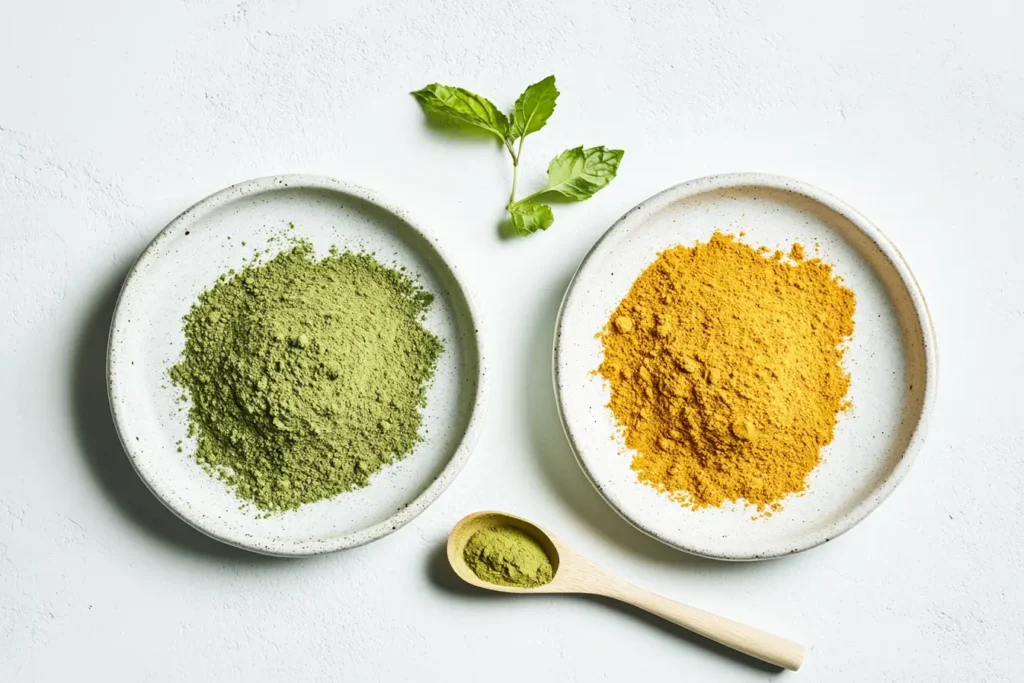
Choosing the Best Matcha for Baking Green Tea Cookies
Not all matcha powders are suitable for baking. Ceremonial-grade matcha is the highest quality, known for its vibrant green color and delicate flavor. However, it is also expensive and better suited for tea ceremonies or lattes.
Culinary-grade matcha, on the other hand, is designed for baking and cooking. It has a bolder flavor that holds up well to heat and costs less than ceremonial-grade options. Always opt for a high-quality culinary-grade matcha to ensure the best results in your baked goods.
How Matcha Storage Prevents Cookies From Losing Color
Proper storage is essential to maintain the freshness and color of matcha. Exposure to air, light, or moisture can cause matcha to oxidize and lose its vibrant hue.
Here’s how to store matcha effectively:
- Use an airtight container, preferably opaque, to block light.
- Keep matcha in a cool, dry place, like a pantry or refrigerator.
- Avoid storing matcha near strong-smelling ingredients like spices or coffee, as it can absorb odors.
If you’re curious about the versatility of matcha in other desserts, explore our feature on Matcha: An Underrated Baking Ingredient for tips and inspiration.
Effects of Old Matcha Powder on Cookie Browning
Expired matcha powder tends to look dull and yellowish instead of bright green. Using old matcha will almost certainly result in cookies that lack the desired vibrancy.
Check the expiration date on your matcha package, and if in doubt, test a small batch before committing to a full recipe.
Common Baking Mistakes That Cause Matcha Cookies to Turn Brown
Overbaking
Even 1–2 extra minutes can turn your cookies brown.
Bake for 10–11 minutes at 325°F, and remember: they’ll continue cooking on the baking sheet after you remove them.
Skipping the Dough Chill ❄️
Warm dough spreads too much, becoming thinner and browner.
Always chill your dough for at least 30 minutes before baking for greener, thicker cookies.
Overmixing the Dough
Mixing too much adds air, increasing oxidation.
Stop mixing as soon as the ingredients are combined.
Use a spatula for the final blend.
If you enjoy experimenting with matcha desserts, don’t miss our <a href=”https://yumarecipes.com/chocolate-and-matcha-pairing-desserts-drinks/”>Chocolate and Matcha Pairing Guide</a> — it’s a match made in dessert heaven. 🍫🍵
✅ Key Takeaways
Store matcha properly to keep it bright green.
Use culinary-grade matcha (not ceremonial or cheap blends).
Bake at 325°F–340°F to avoid oxidation.
Chill your dough before baking.
Avoid overmixing and overbaking.
For more on flavor pairings with matcha, don’t miss our article on Chocolate and Matcha Pairing: Desserts and Drinks, where we delve into the perfect combinations for your favorite matcha treats.
Tips to Keep Matcha Cookies Green
Baking Techniques for Color Retention
To preserve matcha’s green color, it’s important to bake at a moderate temperature and avoid prolonged baking times. Use an oven thermometer to ensure your oven is at the correct temperature, as some ovens can run hotter than their settings indicate.
For example, bake your cookies at 325°F for 10–12 minutes, and let them cool on the baking sheet to finish setting.
Using Culinary-Grade Matcha for Better Results
High-quality culinary-grade matcha is key to maintaining vibrant cookies. Look for brands that emphasize color and flavor retention in baked goods.
Alternative Techniques
Adding a small amount of lemon juice to the dough can help stabilize the green color by reducing oxidation. Be careful not to add too much, as it can alter the flavor of the cookies.
For instance, mix 1 teaspoon of lemon juice into the wet ingredients before combining them with the dry ingredients.
Looking for a recipe that keeps matcha’s color intact while offering delicious flavors? Try our Matcha Brownies Recipe: A Healthy and Delicious Dessert You’ll Love for a foolproof guide.
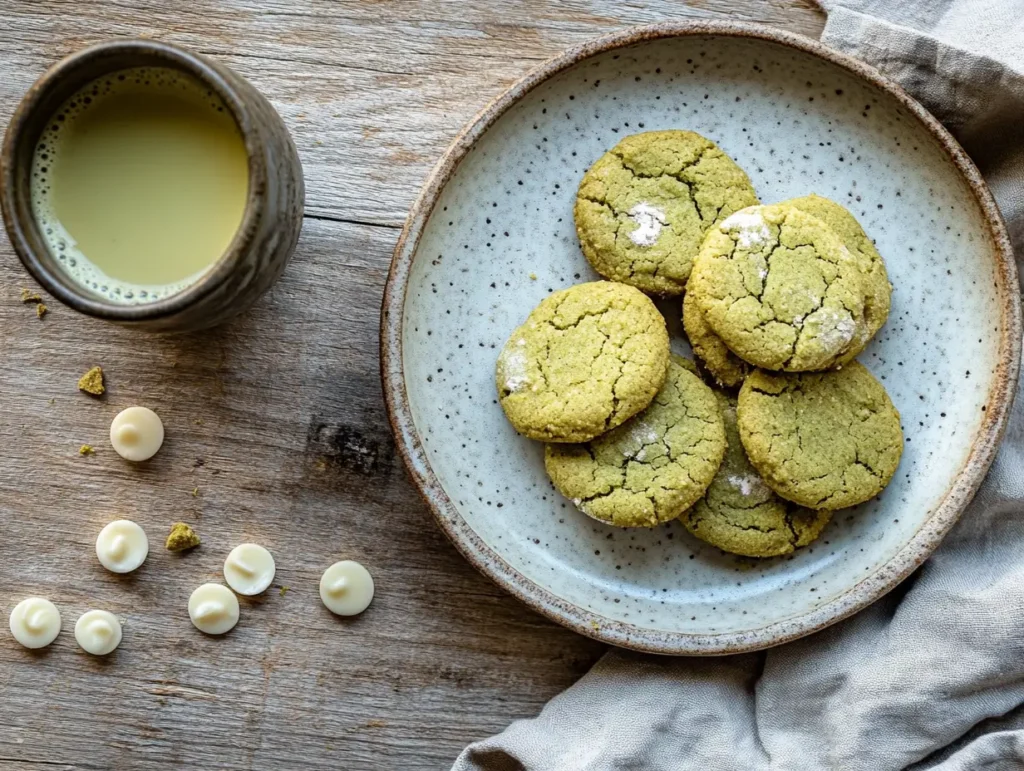
How to Fix Brown Matcha Cookies
What to Do if Cookies Turn Brown
If your cookies come out brown, don’t despair. You can salvage them by decorating with matcha frosting or dusting them with powdered sugar to mask the discoloration.
Another option is to dip the cookies in white chocolate for a visually appealing finish.
Flavor vs. Aesthetic
Even if the cookies are brown, their flavor often remains unaffected. Focus on highlighting the taste with complementary ingredients like a drizzle of matcha glaze or a sprinkle of toasted sesame seeds.
Creative Solutions
Repurpose brown matcha cookies into other desserts. For example:
- Crumble them as a topping for ice cream.
- Use them as layers in a trifle with whipped cream and fresh fruit.
- Blend them into a no-bake matcha cheesecake crust.
Conclusion
Baking matcha cookies that stay green is all about understanding oxidation, temperature, and ingredient chemistry.
Once you control those factors, your cookies will look bakery-perfect — bright, bold, and irresistible.
So grab that matcha, chill the dough, and bake confidently — you’re about to master the art of the perfect green cookie. 🌿✨
Ready to bake again? Start with our Fudgy brown butter matcha brownies for bakery-style results every time!
For more insights into matcha’s health properties, check out this article from Harvard Health exploring its possible benefits.
FAQS
Why is my matcha cookie brown?
Your matcha cookie may turn brown due to factors like high baking temperatures, oxidation of matcha powder, or the Maillard reaction. Using low-quality matcha or baking the cookies for too long can also cause browning. To prevent this, bake at 325–350°F, use fresh culinary-grade matcha, and avoid overmixing the dough.
Why did my matcha cake turn brown?
Matcha cakes can turn brown because of high heat exposure, prolonged baking times, or poor-quality matcha powder. Oxidation during baking breaks down the chlorophyll in matcha, leading to discoloration. To maintain the vibrant green hue, use fresh, high-quality matcha and bake at a moderate temperature.
How to prevent matcha from turning brown?
To prevent matcha from turning brown:
Use fresh, high-quality culinary-grade matcha.
Bake at lower temperatures (325–350°F) and avoid overbaking.
Store matcha in an airtight container, away from light and heat.
Chill your dough or batter before baking to minimize spreading and discoloration.
Why is my matcha brown?
Matcha can turn brown due to oxidation, improper storage, or exposure to high heat. If your matcha powder looks dull or yellowish, it may be old or of low quality. Always store matcha in an airtight container in a cool, dark place to retain its vibrant green color.
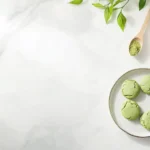
💚 Why Did My Matcha Cookies Turn Brown? The Real Science (and Easy Fixes!)
- Total Time: 32 minutes
- Yield: 12 cookies 1x
- Diet: Vegetarian
Description
Ever baked a batch of matcha cookies expecting a vibrant green, only to find them disappointingly brown? Here’s why it happens — and how to keep your cookies bright and beautiful.
Ingredients
- ¾ cup white sugar
- ¼ cup brown sugar
- 1 cup unsalted butter (or half coconut oil)
- 2 cups all-purpose flour (optional: 2 tbsp bread flour for chewiness)
- 1½ tbsp culinary-grade matcha powder
- ½ tsp baking soda or baking powder (fresh)
- 1 tsp lemon juice (optional, to reduce oxidation)
- ½ cup white chocolate chips (optional)
- 1 large egg
- ½ tsp vanilla extract
- ¼ tsp salt
Instructions
- Store your matcha powder in an airtight, opaque container in a cool place or refrigerator before use.
- Preheat the oven to 325°F (160°C).
- In a bowl, whisk together flour, matcha powder, salt, and leavening agent. Sift if necessary.
- In another bowl, cream the butter (or coconut oil) with both sugars until light.
- Mix in the egg, vanilla extract, and optional lemon juice.
- Gently fold in the dry ingredients just until combined — avoid overmixing.
- Stir in white chocolate chips, if using.
- Chill dough for at least 30 minutes to reduce spreading and browning.
- Scoop dough onto a lined baking tray.
- Bake for 10–12 minutes, until edges are just set. Avoid overbaking.
- Let cookies cool on the tray to finish setting and prevent overcooking.
Notes
Use high-quality, culinary-grade matcha. Avoid overmixing and overbaking for the brightest green cookies. You can add lemon juice to stabilize color. White chocolate chips help brighten appearance.
- Prep Time: 20 minutes
- Cook Time: 12 minutes
- Category: Dessert
- Method: Baking
- Cuisine: Japanese-Inspired
Nutrition
- Serving Size: 1 cookie
- Calories: 180
- Sugar: 12g
- Sodium: 90mg
- Fat: 9g
- Saturated Fat: 5g
- Unsaturated Fat: 3g
- Trans Fat: 0g
- Carbohydrates: 22g
- Fiber: 0g
- Protein: 2g
- Cholesterol: 25mg
Keywords: matcha cookies, green cookies, matcha baking, vibrant matcha, cookie browning

